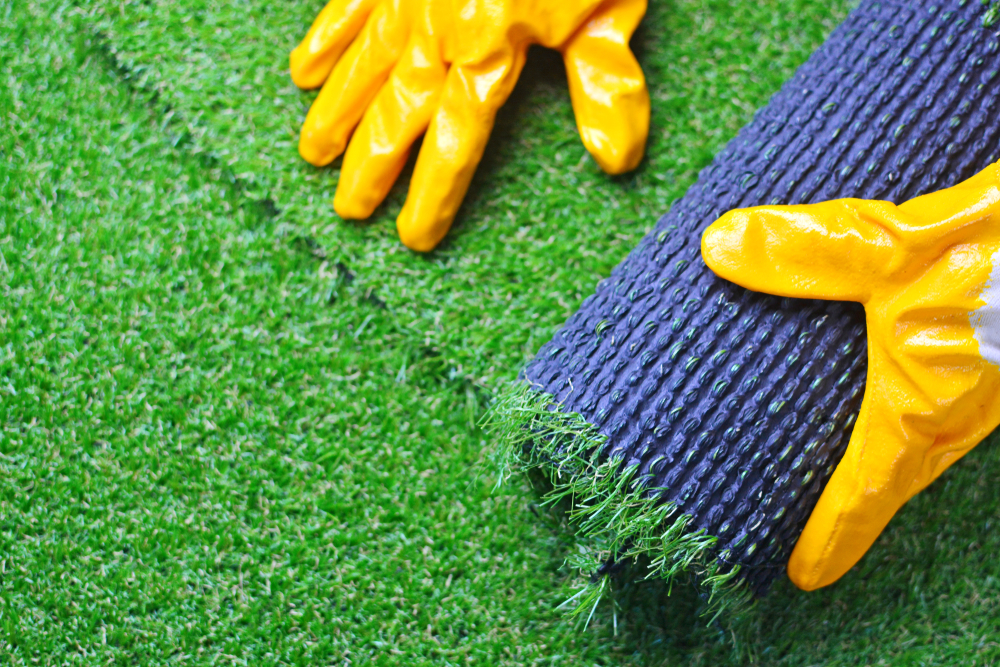Artificial Turf Rockwall Fundamentals Explained
Wiki Article
What Does Artificial Turf Rockwall Mean?
Table of ContentsThe Of Turf Supplier ForneyTurf Supplier Rockwall Fundamentals ExplainedAn Unbiased View of Turf Supplier ForneyArtificial Turf Wylie for DummiesThe Single Strategy To Use For Artificial Turf Wylie
Warm-season turfs are best grown in late spring as well as very early summer season. Unlike cool-season lawns, some warm-season grasses need to be planted either by sod or various other vegetative ways because seeds either are not readily available or do not lead to uniform stands. Warm-season grasses are generally seeded or grown as a single range (monoculture) as opposed to in blends as well as mixes.These older cultivars can come to be thatchy puffy as a result of an accumulation of dead, passing away, decaying plant deposit at the soil surface area. This is particularly so when these turfs are trimmed high and infrequently or heavily fertilized. Thatch may require to be eliminated every a couple of years, but care needs to be taken because the healing price of these cultivars is extremely slow.
With correct maintenance, it will certainly provide a dense, rich yard. St (Artificial Turf wylie). Augustinegrass is extremely color and salt tolerant yet is considered the least chilly forgiving yard grass. The cultivar Raleigh has the most effective chilly resistance as well as is well adjusted for the eastern side of the piedmont as well as the western side of the coastal plain.
Website and soil prep work, including fertilization, are specifically important. Preparing the website entails removing weeds as well as particles, planning for drain, and also grading the site. Urge that the builder not utilize the website as a dumping ground for paint, concrete, as well as various other products.
Our Turf Supplier Forney Diaries
A solitary dirt test may be all that is needed if there are no obvious differences in soil appearance, surface, or bothered areas of the front yard as well as yard. If the dirts appear different, gather dirt examples to a deepness of 3 to 4 inches from numerous (10 to 15) locations as well as blend them with each other to create a composite example.As advised above, it's best to submit a dirt example for screening when establishing a new yard to establish just how much lime as well as plant food should be added to your soil. This is particularly important if you are planting centipedegrass. It favors acidic dirts and reduced levels of phosphorus and may not require the addition of lime as well as phosphorus.
Ideally, the fertilizer ought to have a you can try these out 3-1-2 or 4-1-2 evaluation (as an example, 12-4-8 or 16-4-8), as well as one-fourth to one-half of the nitrogen ought to be a slow-release type. If this ratio can not be situated, after that a straight-grade analysis product (for instance, 10-10-10) might be made use of at a 0. 5 to 0.
Seeding: Cool-season yards are best seeded from mid-August to October 1, relying on area (see Tables 2a, 2b, as well as 2c). Seeding beyond these dates increases the opportunity of failing triggered by wintertime injury. Spring or late-winter seedlings are frequently less than satisfactory due to the fact that the seedling origins do not have time to end up being well established prior to the warmth as well as drought of summer season.
See This Report on Artificial Turf Wylie
Seed visit the website the yearly ryegrass at 1. 5 to 2 pounds per 1,000 sq ft. Instead of adhering these details to the above pointers, you may wish to seed the desired cool-season yard. This treatment may succeed in some years, but in any kind of event will offer you ground cover up until fall, also if all of the grass passes away. Turf supplier Rockwall.One means to be certain you have seed or planting product that is real to type, free of toxic weed seed, as well as contains reduced levels of various other crop seed, is to buy certified seed or turf. A blue certified tag suggests that the seed or plants have actually satisfied particular requirements to ensure high quality and also low degrees of contaminants.
To ensure uniform protection, make use of a centrifugal (rotating) or drop-type spreader. Gently cover the seed by hand raking or dragging with a floor covering or span of chain-link fence.

Not known Facts About Turf Supplier Forney
5 to 1 pound of nitrogen per 1,000 sq ft each to 3 weeks for the fastest spread. Here are the techniques most useful in yard locations: Room growing is the planting of different shoots or sprigs (joggers, cuttings, or stolons) at regular spacings. This labor-intensive technique is best made use of for growing small areas.
Make sure the dirt is wet (but not excessively wet) before laying sod. Irrigating the dirt a number of days prior to distribution is usually adequate.
Again, to guarantee high quality as well as much better possibility for success, it is extremely suggested that licensed turf be utilized. A checklist of manufacturers expanding certified turf can be located on the NCCIA internet site. The moments and also prices for growing vegetative lawns are offered in Tables 2a, 2b, and also 2c. Table 2a.

The smart Trick of Turf Supplier Forney That Nobody is Discussing
Begin mowing as quickly as the yard is 50 percent higher than the preferred height. The frequency of mowing is governed by the quantity of development, which depends on temperature level, fertility, wetness conditions, the period, and also the all-natural growth rate of the grass.
Report this wiki page